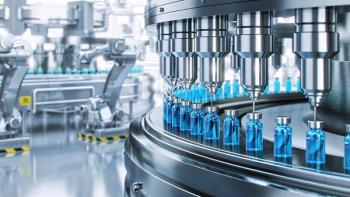
Biopharma’s Digital Hopes Versus Actual Implementation
The BioPharm International biopharma industry report on digital transformation uncovers an adoption paradox. This video summarizes our findings.
The biopharmaceutical industry is navigating a paradoxical landscape: while new manufacturing and development approaches move toward commercialization, spurred by the promise of technologies like AI, advanced analytics, and digital twins, the adoption of these tools has been sporadic, according to the BioPharm International digital transformation in biopharma industry report (1). Headlines highlight cutting-edge breakthroughs, such as generative artificial intelligence (AI) outperforming nature in protein design and clinical progress in complex gene therapies (1-7), yet the foundational manufacturing and quality systems supporting these innovations are modernizing at a far slower pace (1).
The sector is currently in a transitional phase of digital adoption. Our survey data reveal that more than one-third of the industry is still in the "early exploration/pilot projects" or "not yet started" phase of digital transformation, signifying a major gap between the needed digital infrastructure and the current reality (1).
The impetus for digital transformation is overwhelmingly internal and economic, driven primarily by the need for "efficiency and cost savings," identified by nearly two-thirds of respondents. External drivers, such as competitive differentiation or regulatory expectations, are minimally cited as motivators.
The most significant roadblocks are also internal. These practical hurdles include integration challenges with legacy systems (36.8%), high implementation costs (31.5%), and a critical lack of internal expertise (26.3%). A workforce skills gap further compounds this, as nearly half of survey respondents reported their organization’s staff was unprepared for digital transformation regarding skills, training, or mindset.
Despite these barriers, future investment priorities signal a major shift toward advanced analytics. There is an AI paradox: while nearly 80% of respondents believe advanced analytics, AI, and machine learning will have the greatest impact in the next 3-5 years, less than one-third of organizations have started implementation, with the majority still in pilot or exploration phases. Successfully addressing legacy system integration and closing the skills gap will be crucial for the industry to realize the promised capacity and efficiency gains.
Access our full
References
- Cole, C.
Report – Digital Transformation in Biopharma: The Gap Between Hype and Implementation . BioPharmInternational.com. Oct 9, 2025. - Mirasol, F.
PDA 2025: How Strategic CAPA Builds Anti-Fragile Manufacturing Compliance . BioPharmInternational.com. Sept 11, 2025. - Mirasol, F.
PDA 2025: Leveraging AI for GxP Compliance in Drug Production . BioPharmInternational.com. Sept 10, 2025. - Mirasol, F.
PDA 2025: Data Governance and AI's Impact on Drug Manufacturing . BioPharmInternational.com. Sept 9, 2025. - Spivey, C.
Behind the Headlines Episode 26: Clinical Advances, Weight-Loss Deals, and Swiss Startup Strength . BioPharmInternational.com. Oct 1, 2025. - Lavery, P.
Enzene Opens New NJ Facility, Positioning Itself as a ‘CIDMO’ Partner . BioPharmInternational.com. Sept 24, 2025. - Schneipp, S; Schmitt, S; Haigney, S.
Ask the Expert: Questions about Real-World Evidence and Supply Chain Security . BioPharmInternational.com. Sept 25, 2025.
Newsletter
Stay at the forefront of biopharmaceutical innovation—subscribe to BioPharm International for expert insights on drug development, manufacturing, compliance, and more.




